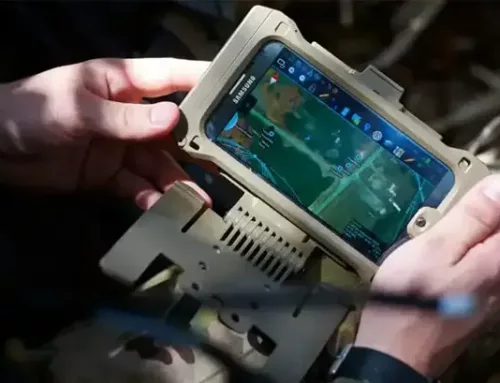In recent years, the rapid proliferation of drones has reshaped industries, without doubt offering unprecedented opportunities for innovation, efficiency and the saving of lives. However, this surge in drone usage has not been without its challenges. The rise of modified drones utilising open source techniques and ready available tools poses a unique set of security concerns, necessitating the evolution of digital forensics in this dynamic landscape.
In the past, the expertise needed to modify a drone’s firmware was specialised and demanded a high level of skill. However, these modifications have evolved into user-friendly “plug-and-play” tools, now accessible to anyone for a nominal fee.

The Drone Revolution: A Double-Edged Sword
Drones have transformed numerous sectors, including agriculture, logistics, emergency response, and situational awareness. However, their widespread availability has also given rise to a concurrent trend where enthusiasts and, unfortunately, malicious actors engage in modifying these uncrewed aerial vehicles (UAVs) to extend their operational capabilities to the limits. This often involves bypassing built-in safety features, posing a risk for unauthorised and potentially harmful purposes.
These modifications vary, encompassing enhancements such as increasing the communication protocol range, deactivating default navigation lights, and removing restrictions such as altitude limits or disabling no-fly zone restrictions. Addressing and mitigating these potential threats require an advanced comprehension of both drone technology and the intricacies of open-source hardware and firmware modifications.
In the video example below which were obtained from YouTube, in the left video, a DJI Mini 3 Pro is seen to fly to an altitude of 2508m which is 8,228ft, clearly bypassing any restrictive onboard safety limits. Although the location has not been verified, the general legal altitude for drones is 400ft.
In the second right hand video, again with a DJI Mini 3 Pro with the FCC hack, the drone is seen to fly at a distance of 4km from the operator. This video is purportedly from the UK.
The Need for Drone Digital Forensics
Venturing into the critical domain of drone digital forensics reveals its increasing importance amid evolving threats. Unlike traditional forensic analysis, this field demands expertise in both aeronautics and conventional digital forensics, an imperative requirement as drones become more sophisticated.
The landscape of drone digital forensics entails the systematic analysis of UAV data, encompassing flight logs, sensor data, and communication protocols. Aerial Defence Ltd forensic experts, by meticulously dissecting these digital breadcrumbs, reconstruct events, identify malicious intent, and offer valuable insights for preventative measures or legal proceedings as a recognised court expert witness.
As drones seamlessly integrate into our daily lives, the demand for advanced drone digital forensics becomes increasingly apparent. Aerial Defence Ltd are positioned to boldly embrace this challenge, offering research, training, and comprehensive investigative and judicial support to stay ahead of those attempting to exploit open source modifications.
If you are involved in UK Law Enforcement or Counter-Uncrewed Aircraft Systems (CUAS) and wish to gain further insights into drone digital forensics, please feel free to contact Aerial Defence Ltd at enquiries@aerial-defence.com. We possess extensive expertise in both the operational and technical aspects of systems at the hardware and software level.







Leave A Comment